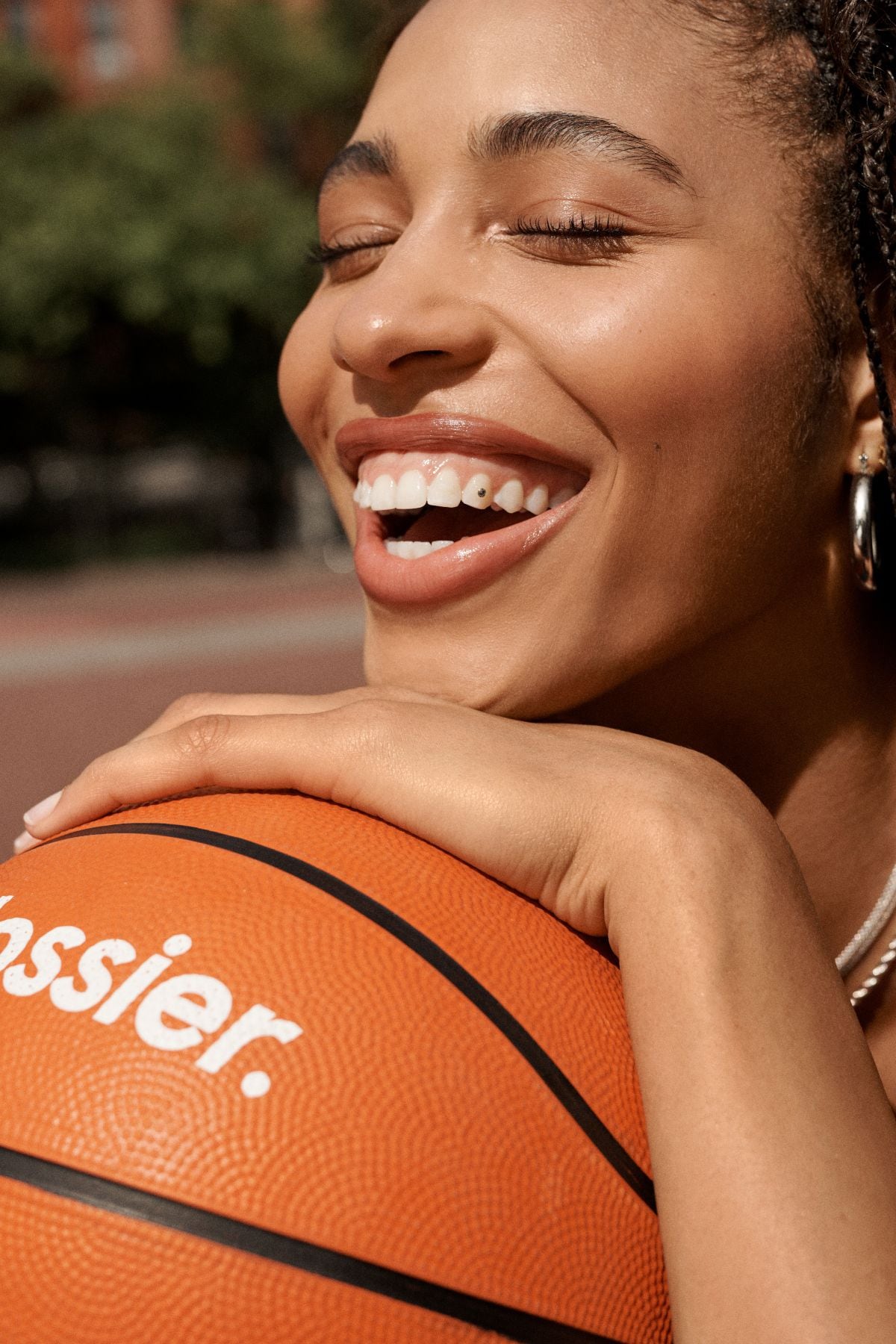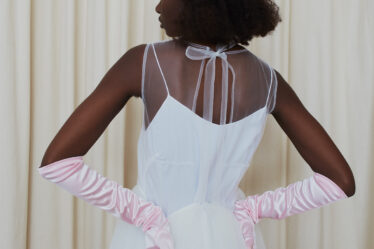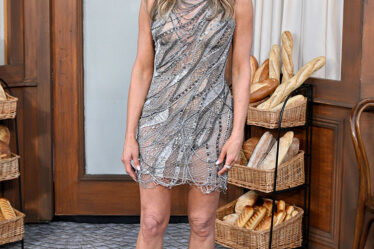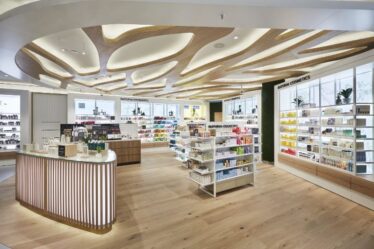
After leaving the University of Kentucky to go pro in 2018, track star Sydney McLaughlin-Levrone signed with entertainment agency WME, which represents major celebrities like Jennifer Garner and Meghan Markle, in hopes of inking brand partnerships that went beyond the traditional athlete shoe deal.
“It was all about breaking the norm of what a track and field athlete is,” said Rob Koslowsky, brand partnerships partner at WME, of the agency’s strategy for McLaughlin-Levrone. “And trying to elevate her out of being a track and field athlete, out of being even an Olympic athlete, and maybe even out of just being an athlete.”
Five years and two Olympic gold medals later, that strategy is paying off: Neutrogena named her an ambassador in September. She’s not the only athlete breaking into beauty. L’Oréal named Australian footballer Mary Fowler as ambassador in March, while Procter & Gamble announced French gymnast Mélanie De Jesus Dos Santos as a spokesperson for its Gillette Venus brand last June.
More than ever, people — and brands — are paying attention to women’s sports. The women’s NCAA basketball championship game in April drew 24 million viewers across ESPN and ABC, making it the most-watched basketball game — in either men’s or women’s, college or professional — since 2019. In August of last year, viewership for the Women’s FIFA World Cup Final peaked at 12 million viewers, eclipsing Novak Djokovic’s nail-biting loss during the men’s Wimbledon final the previous month. This summer, the Paris Olympics will undoubtedly put female athletes like gymnast Simone Biles and rising tennis star Coco Gauff in the spotlight.
For beauty brands looking for fresh faces as consumers grow fatigued of oversaturated influencer marketing, the timing is ripe to tap into women’s sports.
“Many of the traditional levers that the beauty companies, both in mass and prestige, have been using are no longer generating return,” said Pauline Brown, founder of Aesthetic Intelligence Labs and former vice president of corporate strategy at Estée Lauder. “The beauty industry is much quicker to try and look for the next thing. Fashion takes a lot longer.”
When brands find the right partner, the potential payoff is huge: Glossier, which has been a WNBA sponsor since 2020, did the makeup for college basketball phenom Caitlin Clark and a number of her colleagues for the WNBA Draft in April, a record-breaking broadcast that brought Glossier 87 press placements, the brand said.
“It’s community. You’re rooting for someone or something to an aligned goal,” said Kleo Mack, chief marketing officer at Glossier, of sports’ power. “When you have that emotional connection, then you’re much more easily influenced to do or action things.”
But today’s athletes are savvy about their public image, and to ink successful partnerships with them, beauty brands need to find storytelling opportunities that match their long-term goals. That’s even more the case now, when major athletes like Serena Williams can easily launch their own beauty brands.
“The athletes increasingly see themselves as brands. They also, especially the best of the best of them, are becoming more discriminating on how they want to extend their name,” said Brown.
New Table Stakes
For today’s athletes, the game doesn’t end when they leave the stadium.
“They’re constantly performing,” said Yasmin Dastmalchi, US general manager for Nyx Professional Makeup, which announced a partnership with Angel City Football Club of the National Women’s Soccer League this year. This generation of female sports stars also have a robust presence on social media and high-profile events like the Met Gala, where recent WNBA addition Angel Reese walked the carpet.
Beauty brands have similarly expanded their scope in recent years — they’re no longer selling just outer beauty, but also more intangible values like wellness and inclusivity.
“Who among women is the best icon of health and wellness?” asked Brown. “It is these really high-performing athletes.”
For Mielle Organics President Omar Goff, athletes were a valuable tool to combat the stereotype that Black women cannot have their hair done and participate in sports. Last July, the brand became the first natural hair care partner for the WNBA, which is roughly 70 percent Black players, and has since signed players A’ja Wilson and JuJu Watkins as ambassadors.
In April, Brazilian beauty brand Vult ran a campaign starring gymnast Rebeca Andrade (an ambassador for the brand since 2021) to promote Vult’s new textured hair products.
There’s also a new opportunity in working with college athletes, thanks to the 2021 Supreme Court ruling that allows US college athletes to profit off of their name, image and likeness. Previously, young athletes had to weigh the value of playing for their college team with the ability to monetise their image.
Now, “they could potentially make more money in college than outside of college,” said Koslowsky, particularly in sports like women’s basketball where college viewership is higher than in the WNBA. Clark, despite her status as the top WNBA draft pick, will have a starting salary of just $76,535. Her NBA counterpart meanwhile is expected to receive a $10.5 million first-year paycheck.
For potential brand partners, that makes her an especially good deal. “She’s gonna be a lot cheaper than the equivalent of a Michael Jordan coming out of college into the pros,” said Brown. “For these beauty companies that are looking for a marketing angle, they actually are relatively affordable.”
But that may change soon enough. WNBA players will be able to renegotiate their compensation structure in 2025, allowing them to potentially leverage a higher percentage of league revenue more akin to their NBA counterparts.
Olympic Dreams
While basketball stars and footballers have championships and playoffs every year, for other athletes those opportunities on the international stage are few and far between.
“In the sport of gymnastics, there is no pro league. There is no draft,” said Kaila McWilliams, chief marketing officer at talent agency Smith + Saint, which represents Olympic gold medalists Suni Lee and Jade Carey. Both gymnasts are vying to make it to the five-person Team USA to get to Paris this summer; along the way, they’ve picked up beauty sponsorships on social media, with Lee partnering with L’Oréal and Carey with Dove.
“Even if they aren’t a Team USA or Olympic partner, brands want a piece of that event and the big stage of the Olympics,” added McWilliams. “What’s really cool about gymnastics is that there is a level of beauty and wellness woven in. These women are on the national stage, and they want to look and feel their best.”
With the Olympics set in Paris this year, too, it’s a rare chance for fashion and beauty brands to tap into French heritage on the world stage.
“If the Olympics this year were in Osaka or in Prague, we wouldn’t be talking,” said Brown. “It’s because the Olympics are happening in the capital of a country for whom one of their biggest and most storied industries is beauty and fashion. And so it’s a bit of an experiment.”
The International Olympic Committee’s Rule 40 institutes a blackout on advertising between athletes and non-Olympic sponsors from nine days before the opening ceremony until three days after the closing ceremony. Brands like Mielle, which is owned by Olympic sponsor P&G, will be able to participate, and will be offering services in P&G’s salon for athletes that have textured hair, said Goff, as well as planning an activation with basketball player A’ja Wilson, a Mielle ambassador.
Between the Olympics and college basketball, 2024 is proving to be a blink-and-you-may-miss-it moment for beauty brands hoping to tap the sports boom.
“Everybody’s happy to allow these scrappy, relative newcomers, test it out and show that it actually is fruitful,” said Brown of athlete-beauty partnerships like those between Glossier and Mielle with the WNBA. “And then everybody goes after the athletes if it is, and the price goes way up. And the audience fatigue goes way up with it.”



